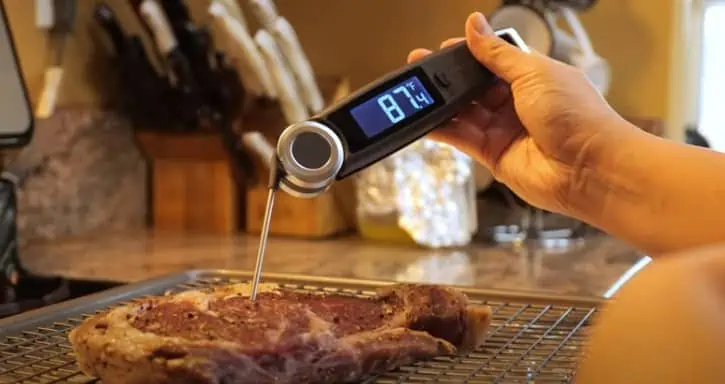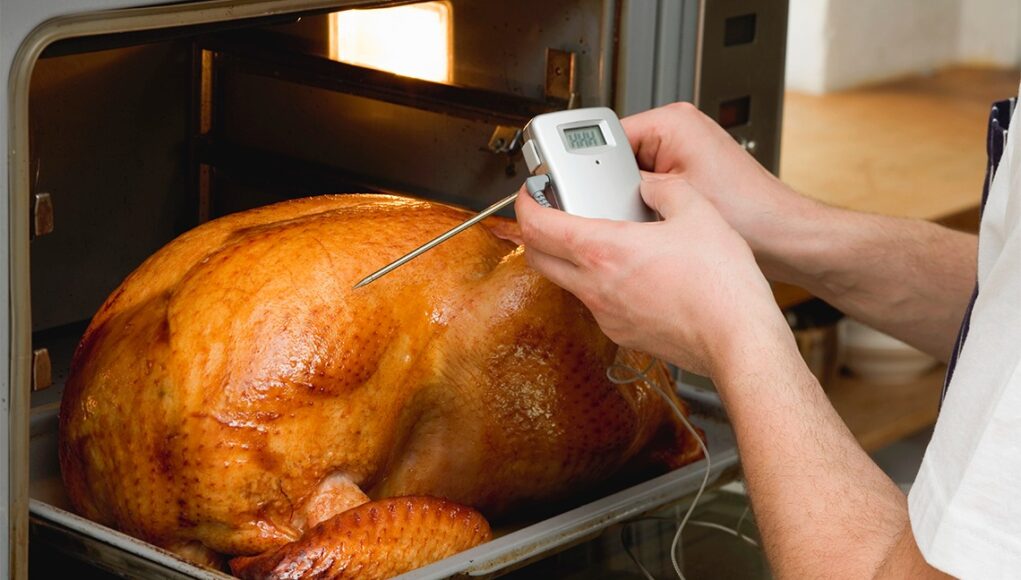Cooking a Cornish hen to perfection can be a delightful experience, but knowing where to put meat thermometer in Cornish hen is crucial to ensure it’s perfectly cooked and safe to eat. In this comprehensive guide, we’ll walk you through the best practices and tips for achieving flawless results every time.

Understanding Cornish Hens
Before diving into the specifics of using a meat thermometer, let’s first understand what a Cornish hen is. Cornish hens are small chickens that weigh between 1 to 2 pounds. They are known for their tender meat and are perfect for individual servings, making them an excellent choice for special occasions or intimate gatherings.

Importance of Using a Meat Thermometer
Using a meat thermometer is essential when cooking poultry, including Cornish hens. It ensures that the meat reaches the safe internal temperature required to kill harmful bacteria, preventing foodborne illnesses. Moreover, it helps you achieve the desired level of doneness without overcooking.
Different Types of Meat Thermometers
There are several types of meat thermometers available, including:
- Digital Instant-Read Thermometers: Provide quick and accurate readings, making them ideal for checking the temperature of Cornish hens.
- Probe Thermometers: These thermometers have a probe that can be inserted into the meat, with the display unit remaining outside the oven.
- Dial Oven-Safe Thermometers: These can be left in the meat while it cooks, allowing you to monitor the temperature continuously.

Where to Put Meat Thermometer in Cornish Hen
To ensure accurate readings and perfect results, it’s vital to know where to put the meat thermometer in Cornish hen. Follow these steps for optimal placement:
1. Insert into the Thickest Part of the Thigh
The thickest part of the thigh is one of the best spots to measure the internal temperature of a Cornish hen. Make sure the thermometer’s tip is not touching the bone, as this can give a false reading. The safe internal temperature for poultry is 165F (74C).
Learn more about the best cooking practices by checking out this article: microwave chicken
2. Check the Juices
Another way to ensure your Cornish hen is done is by checking its juices. Insert the thermometer into the thigh, and if the juices run clear, the bird is likely cooked through. However, always rely on temperature readings for accuracy.
Step-by-Step Guide to Using a Meat Thermometer
Heres a simple step-by-step guide on how to use a meat thermometer effectively:
Step 1: Preheat the Oven
Preheat your oven to the desired temperature. This ensures even cooking and accurate readings.
Step 2: Prepare the Cornish Hen
Season your Cornish hen as desired and place it on a roasting rack in a shallow pan.
Step 3: Insert the Thermometer
Insert the meat thermometer into the thickest part of the thigh, ensuring it doesnt touch the bone.
Step 4: Monitor the Temperature
Place the Cornish hen in the oven and monitor the temperature. For digital instant-read thermometers, check the temperature periodically. For probe or dial oven-safe thermometers, you can continuously monitor the temperature without opening the oven.
Step 5: Check for Doneness
Once the thermometer reads 165F (74C), your Cornish hen is done and safe to eat. Remove it from the oven and let it rest for a few minutes before serving.
For more tips on enhancing your cooking techniques, check out this resource: Season Cast Irons
Common Mistakes to Avoid
When using a meat thermometer, it’s essential to avoid common mistakes such as:
- Placing the Thermometer Against the Bone: This can result in inaccurate readings.
- Not Inserting Deep Enough: Ensure the thermometer reaches the thickest part of the meat.
- Using a Faulty Thermometer: Always check that your thermometer is working correctly before use.
To enhance your cooking skills further, explore this guide: Preheat a griddle
Why Temperature Accuracy Matters
Accuracy is crucial when cooking Cornish hens. The correct temperature ensures the meat is safe to eat and not undercooked. Additionally, it prevents the meat from drying out, ensuring a juicy and flavorful result.
Tips for Achieving Perfectly Cooked Cornish Hens
Here are some additional tips to help you achieve perfectly cooked Cornish hens:
- Brining: Brining your hens before cooking can help retain moisture and add flavor.
- Seasoning: Use a blend of herbs and spices to enhance the taste.
- Resting: Allow the hens to rest for a few minutes after cooking to redistribute the juices.
Recommended Side Dishes
Pairing your perfectly cooked Cornish hen with delicious side dishes can elevate your meal. Consider serving it with:
- Roasted vegetables
- Mashed potatoes
- Garlic bread
- Mixed greens salad
For more inspirations on what to pair with your chicken, visit: Pair with chicken
Using the Meat Thermometer for Other Poultry
The principles for using a meat thermometer with Cornish hens apply to other poultry such as chickens, turkeys, and ducks. Insert the thermometer into the thickest part of the meat, avoiding contact with bones, and ensure it reads 165F (74C) for safe consumption.
Cleaning and Maintenance of Meat Thermometers
Proper cleaning and maintenance of your meat thermometer are essential for hygiene and longevity. Here are some tips:
- Clean After Each Use: Wash the thermometer with warm soapy water after each use.
- Avoid Immersing in Water: Do not immerse the digital head in water.
- Store Safely: Keep the thermometer in a protective case when not in use.
FAQs
1. How do I know when my Cornish hen is done?
Use a meat thermometer to check the internal temperature. It should read 165F (74C) when inserted into the thickest part of the thigh.
2. Can I use a meat thermometer for other types of meat?
Yes, a meat thermometer can be used for various types of meat, including chicken, turkey, beef, and pork. Ensure you know the safe internal temperatures for each type of meat.
3. What if I don’t have a meat thermometer?
While a meat thermometer is the most accurate way to check for doneness, you can look for other signs, such as clear juices and reaching the recommended cooking time. However, the safest method is always to use a thermometer.
Learn more about using a meat thermometer for accurate cooking.
As an Amazon Associate, I earn from qualifying purchases.
We hope this guide has provided you with valuable insights on where to put the meat thermometer in a Cornish hen. By following these tips, you’ll ensure perfectly cooked and delicious results every time.









